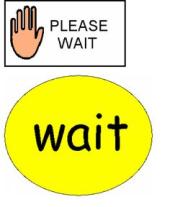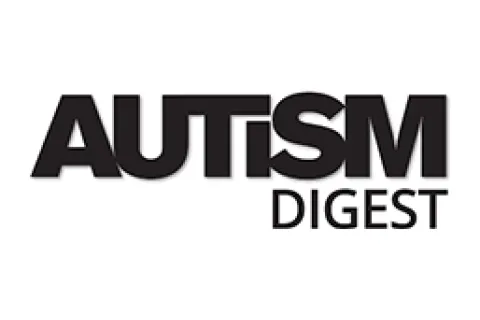Help! Preschooler with autism won’t stop throwing things when upset
By Dr. Amanda Bennett and Dr. Megan Carolan TomkinsonToday’s answer is by developmental pediatrician Amanda Bennett and behavior analyst Megan Carolan Tomkinson. Dr. Bennett is the director of the Autism Speaks Autism Treatment Network site at Children’s Hospital of Philadelphia, where Ms. Tomkinson also practices.
Throwing things. This is how our 3-year-old son [recently diagnosed with autism] shows anger or disappointment. It is hard to redirect him or encourage him out it. Any advice?
Temper tantrums and other physical displays of anger are common among toddlers. Autism can add to the issue due, at least in part, to associated difficulties with communication and social awareness.
The challenging behavior you describe is an excellent issue to address through an individualized therapy program for your son. Such a program would be developed under the guidance of a professional trained in the principles of Applied Behavior Analysis (ABA) or a related behavioral approach.
Thanks to federal mandates, such services are available free of charge to children who need them through their state’s Early Intervention Program (EIP) or Individualized Education Program (IEP). Learn more with the resources below:
- Find board certified behavior analysts in your area
- Find your states Early Intervention office
- Download Autism Speaks IEP Tool Kit
- An Introduction to Behavioral Health Treatments
- A Parent’s Guide to Applied Behavior Analysis
Strategies to help prevent children with autism throwing things
While it’s best for a professional to develop a personalized approach for you son, we can offer some general strategies to help you identify why your son habitually throws things and how you can help him find more constructive ways to communicate his emotions and needs.
Finding the why
Before you try to improve your son’s behavior, it’s important to identify what may be maintaining the problem. What does he get from throwing things? What purpose might it be serving? The goal is to help him find more constructive, or “functional,” ways to get what he wants or needs.
Another important question: What kinds of situations trigger the throwing?
You mentioned that he throws things when he’s angry or disappointed. What do you see as the most common triggers for his anger or frustration? Perhaps it’s when you have to tell him “no” and/or ask him to do something he doesn’t want to do. How about situations when he can’t seem to communicate what he wants?
This is how we would begin a professional behavioral intervention program. We would perform what we call a Functional Behavior Assessment – by observing what triggers the problem behavior. Such an assessment should be done in the setting where the challenging behavior tends to occur. So in your son’s case, it might be done in your home.
Based on why your son is throwing things, you and/or your son’s therapist can develop a plan to decrease the unwanted behavior and increase an appropriate replacement behavior.
Let’s take, for example, the goal of having your son learn to wait calmly for what he wants instead of throwing things.
Below are some strategies we often use to encourage such a “functional,” or helpful, behavior:
Shaping
It’s important to teach new behaviors in small steps and slowly increase expectations in pace with your son’s successes. So in the example of waiting patiently, you’ll want to reinforce and reward his ability to stay calm. But it’s important to start with a very short interval – say, 1 to 3 seconds. If he succeeds in waiting even a couple seconds without throwing something, immediately praise him for doing so and provide a small reward. (More on reinforcement and rewards below.) Gradually increase the amount of time he needs to wait to get his reward.
Reinforcement and rewards
We all respond to reinforcing rewards. In the early stages of introducing a new skill, it’s important to provide small rewards for each small step in the right direction. These can include reward tokens, a favorite food or even a small toy. It’s important to reward your child in the moment that you see a desired behavior. For example – using a word, picture or sign to ask for what he wants, instead of throwing something. Even an attempt toward the desired behavior should be freely rewarded in the early stage of teaching a new behavior.
Visual Supports
Many children with autism have difficulty processing spoken language. In general, they seem to respond better to visual cues. So to communicate your expectations, we suggest using a “first/then” sign.
Under “first” column, you place a picture of the desired behavior – in this case waiting patiently. Under “then,” you show the reward – in this example, time with a favorite toy.
For more information and examples, see the Autism Speaks ATN/AIR-P Tool Kit Visual Supports and Autism Spectrum Disorder.
One you have a plan in place, it helps to create lots of opportunities to practice the new behavior. This gives you a measure of control and allows you to have your reinforcers and rewards at hand.
So for example, you might place a desired toy just out of reach. This will allow you to reward your son when he signals you – in a positive way – that he would like to have it. For example, by pointing or using words instead of throwing something.
Over time, you can build on this by telling him “Wait” and handing him a wait card (example on right) while you finish what you are doing. You’ve just created an opportunity to reward him for waiting instead of throwing something.
We hope these strategies are helpful to get you started and we wish you and your son all the best. Again, we highly recommend that you enlist the help of professionals. It’s so important to take advantage of autism specialists and resources in your area – whether through your state’s early intervention office, your school district, or an autism specialty clinic such as those in the Autism Speaks Autism Treatment Network (ATN).
Related resources
- Find the ATN nearest you
- For help finding services in your area, contact the Autism Speaks Autism Response Team
- For state-by-state listings of autism specialists, check out the Autism Speaks Resource Guide
Editor’s note: The following information is not meant to diagnose or treat and should not take the place of personal consultation, as appropriate, with a qualified healthcare professional and/or behavioral therapist.









